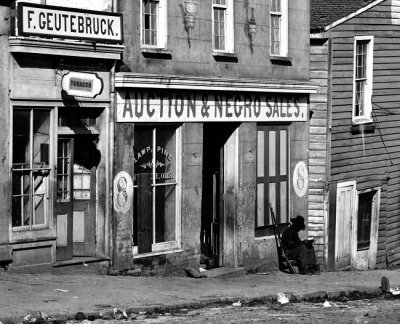
When I was about seven years old I witnessed, for the first time, the sale of a human being. We were living at Prince Edward, in Virginia, and master had just purchased his hogs for the winter, for which he was unable to pay in full. To escape from his embarrassment it was necessary to sell one of the slaves. Little Joe, the son of the cook, was selected as the victim. His mother was ordered to dress him up in his Sunday clothes, and send him to the house. He came in with a bright face, was placed in the scales, and was sold, like the hogs, at so much per pound. His mother was kept in ignorance of the transaction, but her suspicions were aroused. When her son started for Petersburgh in the wagon, the truth began to dawn upon her mind, and she pleaded piteously that her boy should not be taken from her; but master quieted her by telling her that he was simply going to town with the wagon, and would be back in the morning. Morning came, but little Joe did not return to his mother. Morning after morning passed, and the mother went down to the grave without ever seeing her child again. One day she was whipped for grieving for her lost boy. Colonel Burwell never liked to see one of his slaves wear a sorrowful face, and those who offended in this particular way were always punished. Alas! the sunny face of the slave is not always an indication of sunshine in the heart.
— Elizabeth Keckley, Behind the Scenes; or, Thirty Years a Slave, and Four Years in the White House, 1868
